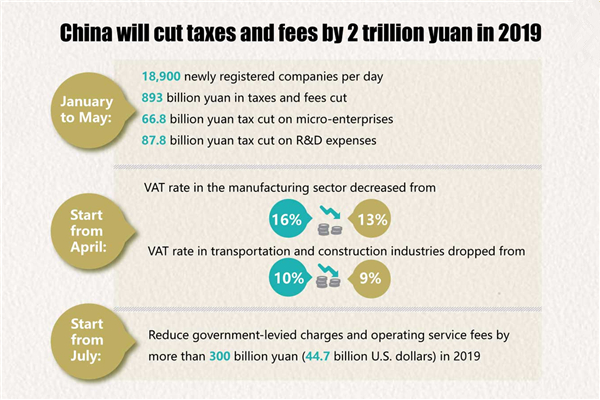Payday Super compliance is becoming a pressing concern for Australia’s small and medium enterprises (SMEs) as they grapple with new superannuation regulations set to reshape payroll management. The recent guidelines impose a seven-day superannuation payment deadline, drastically reducing the previous timeframe and amplifying the stakes for non-compliance. Research from Employment Hero reveals that SMEs may need an additional $124,000 in working capital to meet these stringent demands, highlighting the potentially seismic shift in compliance requirements that could strain business cash flow. With superannuation reform looming on the horizon, SMEs must prioritize understanding these new expectations to avoid costly penalties. As the deadline approaches, it is critical for businesses to evaluate their operations and align their practices with these impending changes.
The evolving landscape of payroll compliance, particularly in relation to the Payday Super mandates, presents a formidable challenge for small to medium-sized enterprises (SMEs) across Australia. The redefined superannuation payment timelines necessitate a proactive approach to ensure adherence to the new requirements. Moreover, businesses must navigate the implications of these changes on their operational and financial frameworks, particularly concerning their cash flow and compliance strategies. Employment Hero’s insights underscore the importance of being well-informed as SMEs adapt to these shifts, which could require substantial resources and adjustments to payroll processes. As such, understanding the broader context of these reforms is essential for SMEs aiming to thrive in this new regulatory environment.
Understanding the Payday Super Compliance Challenge
The introduction of the Payday Super compliance requirement heralds a significant change in the landscape of superannuation payments for small and medium enterprises (SMEs) in Australia. Businesses are now expected to remit superannuation contributions within a strict seven-day time frame, a drastic reduction from the previous timelines. This new legislative mandate is not merely a procedural change; it is expected to be a fundamental overhaul of how businesses manage their payroll systems and cash flow. Consequently, SMEs must navigate the complexities of this new compliance requirement while ensuring they have the financial resources to meet their operational commitments.
Research conducted by Employment Hero reveals that to manage these new obligations, SMEs may need to find an additional average of $124,000 in working capital. This amount will help businesses accommodate the increased frequency of superannuation payments, thus enhancing their overall cash flow management. As SMEs adapt to these requirements, it is critical for them to understand the implications of failing to comply, which can involve hefty penalties including a 60% administrative uplift added to any shortfall.
Impact of Superannuation Payment Deadline on SMEs
The seven-day superannuation payment deadline poses significant challenges to SMEs, particularly in maintaining essential business cash flow. Cash flow is the lifeblood of any business, and an abrupt shift in the timing of payroll obligations can strain their financial resources. The fear of non-compliance weighs heavily on business owners, with many businesses uncertain about their ability to meet these newly instituted deadlines amid the complexities of day-to-day operations and expenses. With studies showing that 65% of SMEs anticipate a moderate to substantial impact on their operations, the need for strategic financial planning has never been clearer.
Moreover, Employment Hero’s findings indicate that many SMEs lack adequate preparations for the new compliance measures, with nearly 20% feeling ill-equipped to meet the impending deadline. As such, it’s crucial for these businesses to reevaluate their payroll systems and explore solutions that streamline superannuation payments. The introduction of automated processes and compliance features aimed at easing this transition will be essential in empowering businesses to meet these obligations while also supporting their growth.
Mitigating Risks of Payday Super Compliance
Given the stringent penalties associated with the new payday superannuation compliance requirements, SMEs must actively seek ways to mitigate risks. Employment Hero has called for proactive changes, including the modernization of superannuation payment infrastructure and a staggered rollout of the new regulations. This would afford businesses the necessary time to adapt their systems and processes without jeopardizing their financial stability. Providing an extended payment window could also alleviate some of the pressures businesses may face in meeting these deadlines while the industry adapts.
In addition to legislative changes, SMEs are encouraged to invest in understanding and enhancing their compliance readiness. Engaging with payroll solutions such as Employment Hero’s platform, which offers automated superannuation payments, can help SMEs navigate these new requirements more efficiently. Moreover, being proactive in establishing larger cash reserves to manage the shift can be beneficial in meeting the expectations set forth by the new reforms.
Employee Concerns Related to Compliance Changes
While businesses grapple with the operational changes brought about by the payday superannuation reforms, employee sentiment is also a crucial factor to consider. Employment Hero’s research indicates that 84% of employees would feel concerned if their pay cycle were to change due to the new compliance requirements. Such changes can engender mistrust and dissatisfaction among employees, highlighting the importance of transparent communication from employers regarding adjustments in payment structures and timelines.
Ultimately, ensuring employee confidence and satisfaction requires SMEs to approach these changes thoughtfully. This includes explaining the reasons behind adjustments in pay cycles and how they align with new regulatory demands. By maintaining open lines of communication and providing education about their rights and entitlements under the proposed superannuation reforms, employers can foster a more supportive work environment even amidst significant operational transitions.
Superannuation Reform and the Future
The proposed reforms under the payday superannuation initiative could herald a transformative shift in the superannuation landscape. By mandating faster remittance of super payments, it aims to improve retirement outcomes for Australians. However, the successful implementation of this reform largely hinges on how well SMEs can adapt to the changes without adverse financial implications, representing a fine balance between compliance and operational viability.
As the timeline for implementation narrows, stakeholders must collaborate to ensure that the objectives of the payday super reform are met through supportive structures that empower businesses rather than hinder them. It is essential for SMEs to embrace technological advancements, leverage solutions that streamline compliance, and ultimately, contribute positively to the superannuation landscape in a way that promotes economic resilience.
Role of Employment Hero in Facilitating Compliance
Employment Hero is at the forefront of developing tools and systems aimed at assisting SMEs in adapting to the payday super compliance requirements. With its experience managing payroll for a vast number of businesses, the platform is uniquely positioned to guide SMEs through these changes. Their proactive approach includes the introduction of solutions that automate superannuation payments, thus simplifying compliance processes and minimizing risks associated with manual errors.
Additionally, Employment Hero is committed to education and support, providing resources to help SMEs understand the implications of the new regulations. As businesses face challenging adjustments, having a partner like Employment Hero can empower them to not only comply with the new superannuation requirements but to thrive in the evolving landscape of employment management.
The Importance of Cash Flow in Compliance Preparation
As SMEs prepare for the payday superannuation reforms, maintaining healthy cash flow is of utmost importance. With the requirement for additional working capital to meet superannuation payment deadlines, businesses must carefully analyze their financial situations and consider ways to bolster cash reserves. This involves assessing current cash flow channels, reducing unnecessary expenses, and potentially restructuring payment cycles to better align with the new obligations.
Moreover, understanding the cash flow implications of superannuation reform can inform strategic decisions about investments in technology or staffing. Small and medium businesses need to ensure that they are not only compliant but also financially stable throughout the transition. Proactively enhancing their financial management practices will equip SMEs to respond effectively to shifts in both regulatory compliance and market demands.
Future Adaptations Required Post-Reform
The introduction of payday superannuation compliance will likely require ongoing adaptations from SMEs beyond the initial implementation phase. As businesses adjust to the seven-day superannuation payment timeline, continuous feedback and adjustments to policies will be necessary to ensure long-term viability. This means that SME owners must remain aware of potential changes in legislation and market conditions that could further affect their operations.
In this context, continuous learning and flexibility within business practices will be essential. SMEs should consider establishing relationships with financial consultants or industry associations that can support them through future changes. The capacity for businesses to pivot in response to regulatory changes will determine their success in a rapidly evolving economic landscape.
Addressing the Needs of SMEs in Superannuation Reform Discussions
To create an effective regulatory environment for payday superannuation compliance, it is imperative to include the voices of SMEs in discussions related to superannuation reform. Policymakers must recognize the unique challenges faced by small and medium businesses, especially concerning compliance timelines and financial penalties. By engaging SMEs in dialogue, stakeholders can develop more tailored solutions that address the specific needs of this crucial sector of the economy.
Additionally, fostering greater collaboration among business owners and industry leaders can lead to innovative solutions to the challenges posed by new compliance requirements. Workshops, seminars, and forums can serve as platforms for sharing experiences and best practices, further strengthening the overall capacity of SMEs to adapt effectively to the new legislative environment. Engaging in these conversations is vital to ensure that reforms support the growth and sustainability of Australian SMEs.
Frequently Asked Questions
What is Payday Super compliance and how does it affect SMEs?
Payday Super compliance refers to the new requirement for employers to remit superannuation contributions within seven days of paying wages. This significant shift impacts SMEs by demanding an estimated additional $124,000 in working capital to manage the new compliance deadlines and potential penalties for late payments.
What are the superannuation payment deadlines under the new Payday Super compliance rules?
Under the new Payday Super compliance rules, the superannuation payment deadline has been reduced to seven calendar days from the date of wage payment. This represents a 75% reduction from previous timelines, increasing the urgency for SMEs to meet these compliance standards.
How can SMEs prepare for the Payday Super compliance changes?
To prepare for the Payday Super compliance changes, SMEs should evaluate their cash flow management and consider setting aside additional capital. Implementing payroll systems that can streamline superannuation payments and staying informed about compliance regulations are also vital steps for readiness.
What are the penalties for non-compliance with Payday Super regulations?
Penalties for non-compliance with Payday Super regulations include the shortfall amount plus daily interest and an administrative penalty of 60% of the shortfall. These penalties highlight the importance of timely compliance for SMEs to avoid significant financial burdens.
How does Employment Hero assist SMEs with Payday Super compliance?
Employment Hero aids SMEs in achieving Payday Super compliance by providing tools for automated superannuation payments, seamless employee onboarding, and features that enhance compliance with the Australian Taxation Office (ATO) regulations. Their systems are designed to simplify the payroll process for businesses.
What impact will superannuation reforms have on business cash flow?
Superannuation reforms, specifically Payday Super compliance, may strain business cash flow as SMEs will need to remit contributions more frequently, increasing the need for larger cash reserves. On average, businesses may require an additional $124,000 to adjust to these new payment frequencies.
Why is it crucial for SMEs to understand their liability under the new Payday Super compliance rules?
It is crucial for SMEs to understand their liability under the Payday Super compliance rules because businesses are solely responsible for ensuring that contributions are remitted on time, regardless of any external delays, such as those from super funds or clearing houses. This understanding is vital to avoid penalties.
What changes are being recommended to support SMEs in adopting Payday Super compliance?
To support SMEs in adopting Payday Super compliance, several recommendations include a staggered implementation of regulations, extending the payment window to 10 business days, and ensuring fairer penalties along with increased transitional support to mitigate the financial strain on small businesses.
How does the proposed Payday Super compliance aim to improve retirement outcomes for Australians?
The proposed Payday Super compliance aims to improve retirement outcomes for Australians by ensuring timely and consistent superannuation contributions, thus potentially increasing retirement savings over time. However, it must be balanced with the operational capacities of SMEs to avoid unintended negative impacts.
What is the overall preparedness level of SMEs regarding Payday Super compliance?
The preparedness level of SMEs regarding Payday Super compliance is concerning, with 65% of businesses acknowledging a moderate to substantial impact on operations, and 15% being unaware of the impending changes. Businesses are encouraged to enhance their readiness to adapt effectively to the new compliance requirements.
| Key Point | Details |
|---|---|
| Financial Burden | SMEs need an extra $124,000 to comply with new payday super rules. |
| Deadline Change | New seven-day payment deadline introduces a 75% reduction from the current timeframe. |
| Awareness Issue | 15% of SMEs are unaware of the upcoming changes, highlighting a gap in compliance readiness. |
| Penalties for Non-Compliance | Potential penalties include a 60% administration uplift and daily interest on shortfall. |
| Impact on Operations | 65% of businesses expect moderate to substantial impacts on their operations. |
| Infrastructure Concerns | Need for modernization and clarity on liability when payment delays occur. |
| Financial Preparedness | 32.5% of businesses will need larger cash reserves for increased payment frequency. |
| Employment Hero’s Role | Developing solutions to ease compliance, such as automated payments and enhanced features. |
| Recommended Changes | Call for staggered implementation, modernization of infrastructure, and fairer penalties. |
Summary
Payday Super compliance poses significant challenges for Australian SMEs, necessitating an additional $124,000 to adjust to the new superannuation payment rules. As businesses prepare for these impending changes, awareness and infrastructure readiness are crucial to ensure smooth transitions while mitigating potential penalties. The focus on improving cash flow management and understanding regulatory requirements is essential to maintain operational stability in the face of these adjustments.



